Why the Squat Is Essential—and Why We Should Be Measuring It with Smart Tools
Squats are more than a gym staple. They’re an essential human movement pattern. From sitting in a chair to picking up your kid, the ability to squat well touches every part of life. That’s why they’re a go-to in rehab, sports performance, and general health routines. But not all squats are the same—and how we perform them matters. Whether it’s the way we position our trunk or how deep we go, these variables directly affect muscle activation, joint loading, and injury risk. Today, thanks to AI-powered tools like the AiKYNETIX Web Platform, we can now objectively analyze these differences using just a smartphone camera.
Overhead Squat: A Diagnostic Powerhouse
The overhead squat, in particular, is one of the most valuable variations used in both rehabilitation and athletic performance. Why?
In Rehab
It promotes joint mobility in the shoulders, spine, hips, and ankles.
Reveals postural imbalances, such as kyphosis or excessive lumbar extension.
Improves proprioception, balance, and core stability—all essential in injury recovery.
Allows gradual loading of sensitive joints.
In Sports
Tests functional mobility and readiness for load‑bearing.
Trains upper‑lower body coordination.
Strengthens stabilizer muscles crucial in CrossFit, gymnastics, and Olympic lifting.
Prepares athletes for overhead lifts like the snatch or jerk.
How Form Changes Everything
When squatting, seemingly small changes in body angle or stance can drastically change the muscles working and the forces on your joints.
Sagittal plane orientation of the trunk influences external moments at the hip and knee.
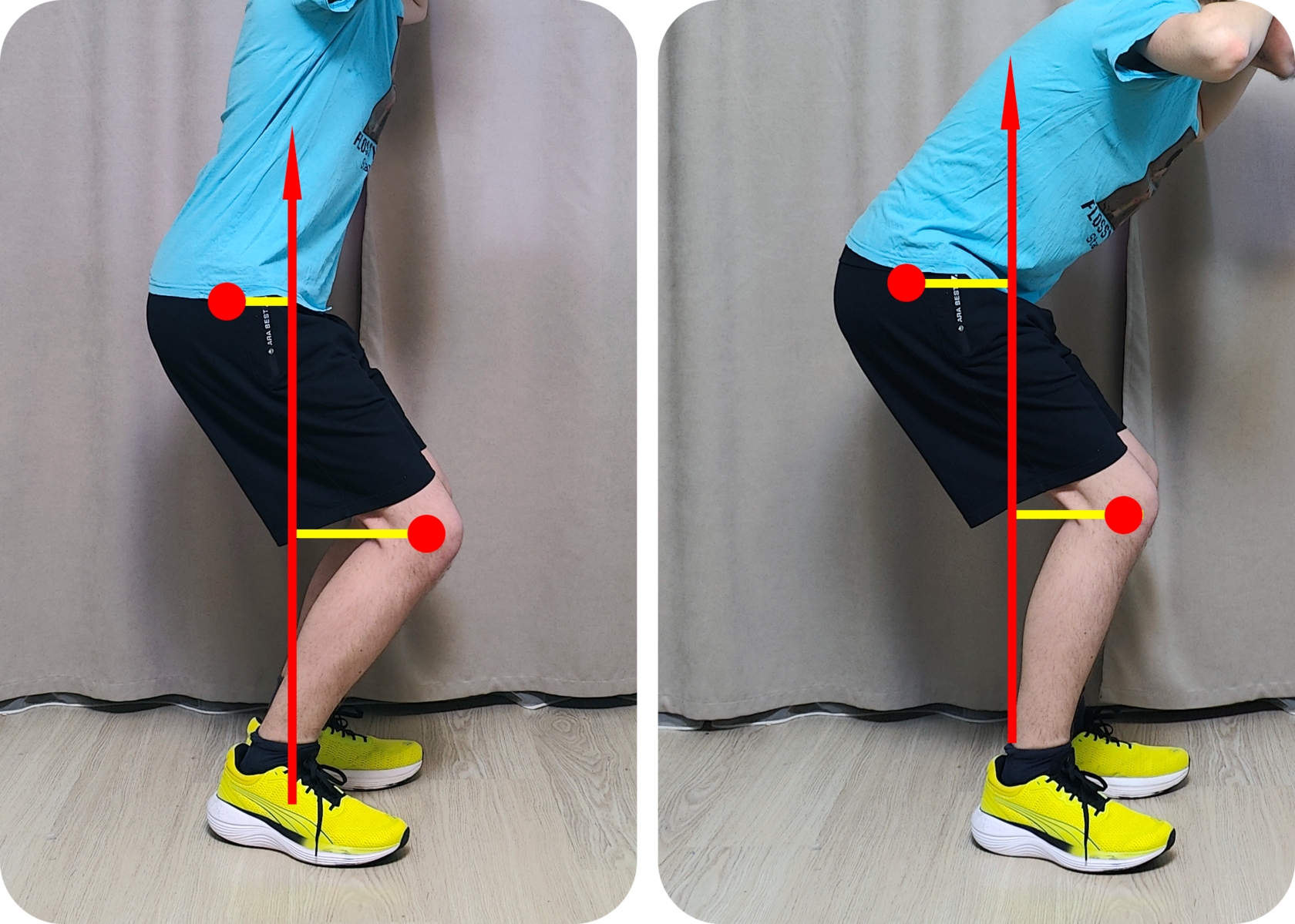
Leaning forward increases the demand on the hips. Staying upright shifts load toward the knees. But how you achieve that lean matters.
(A) Forward inclination by spine flexion increases lumbar stress. (B) A neutral spine with hip flexion improves load control.
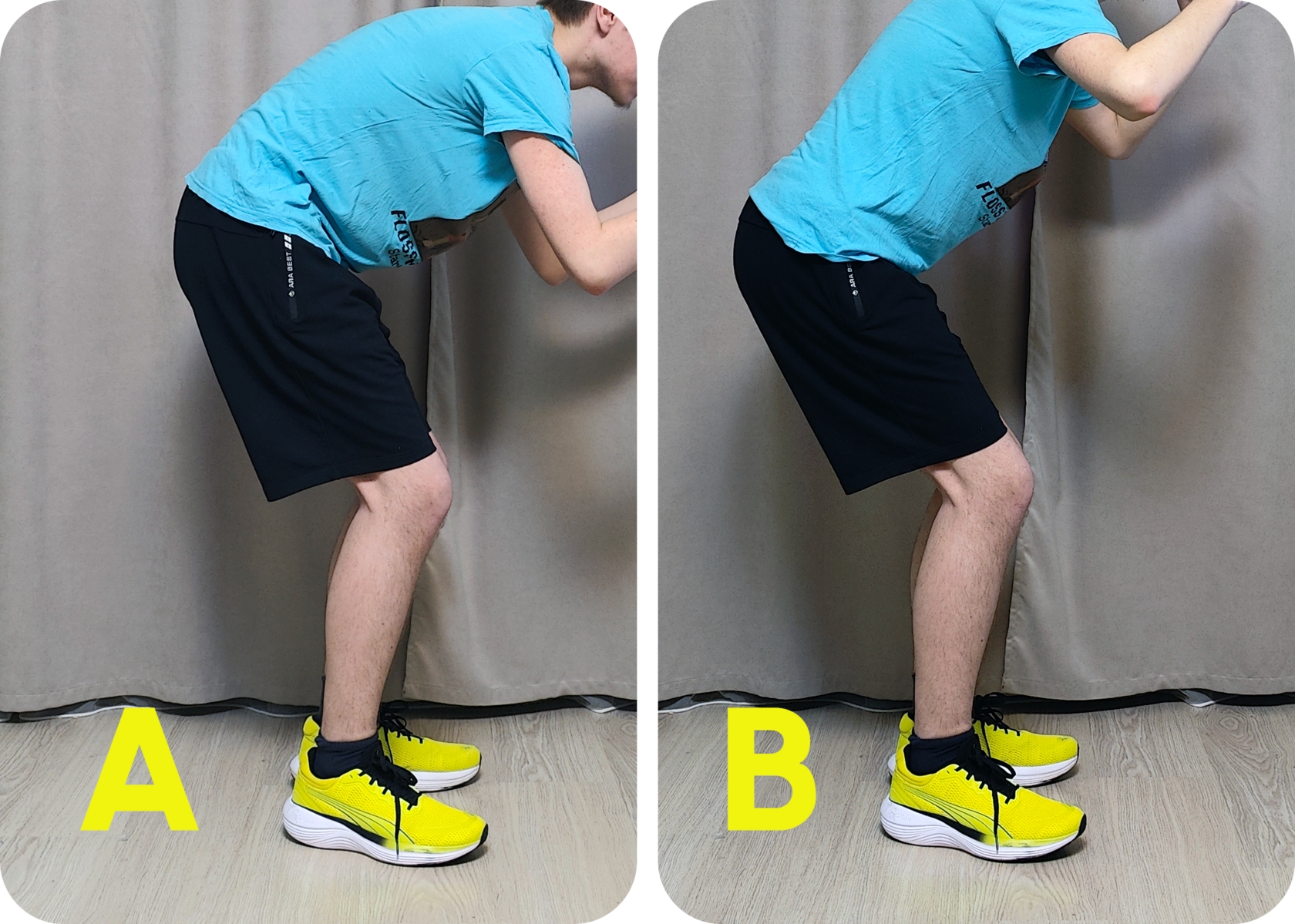
Tibia, Feet, and Flexibility
Your shin angle affects knee flexion demands. A more forward tibia shifts work to the quads. Heel elevation (via shoes or wedges) helps those with limited ankle mobility squat deeper and more safely.
Sagittal plane tibial inclination shifts the external moment at the knee joint.
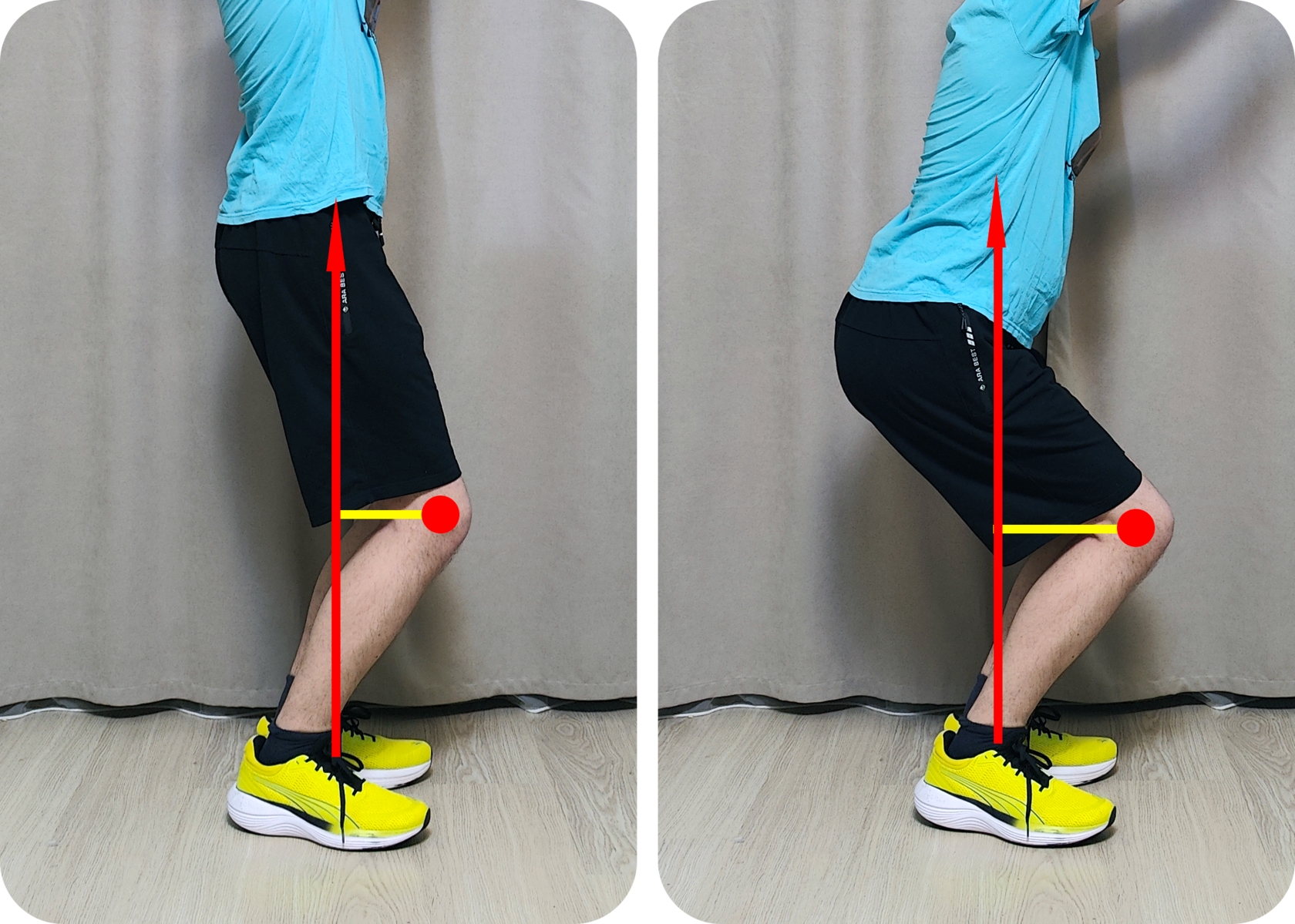
Stance width, foot rotation, and squat depth also matter—each influencing different muscles and force vectors.
Avoiding the “Butt Wink”
When squat depth exceeds hip mobility, the pelvis rotates backward. This posterior pelvic tilt increases stress on the spine and can reduce stability.
Squatting beyond available hip flexion results in posterior pelvic tilt and lumbar stress.
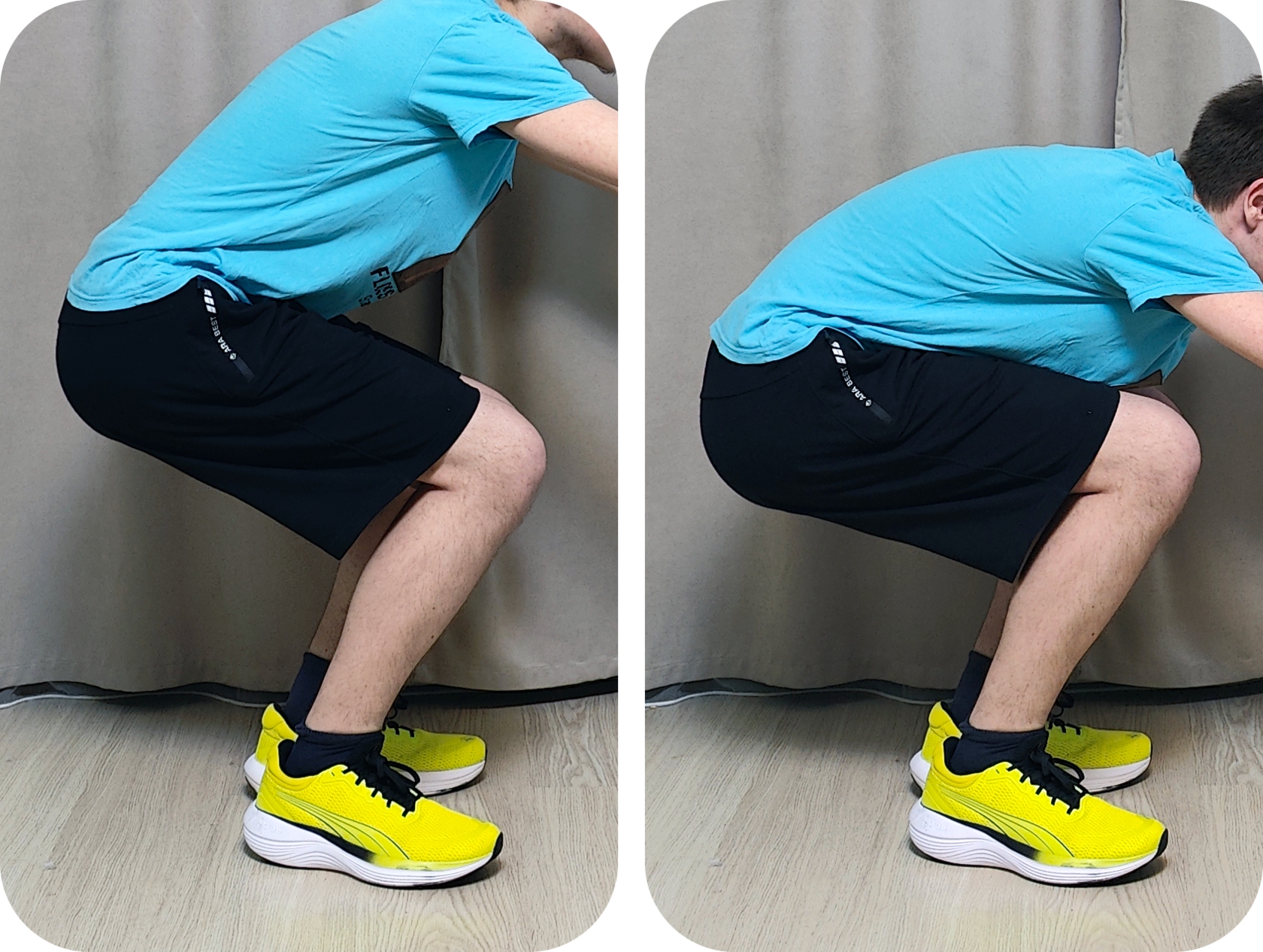
Hip vs. Knee Focus: Let AI Measure It
The trunk–tibia angle—how much the torso leans compared to the shins—reveals which muscles are working harder.
(A) When trunk lean > tibia lean → hip‑dominant; (B) tibia lean > trunk → knee‑dominant. A balanced squat has equal angles.
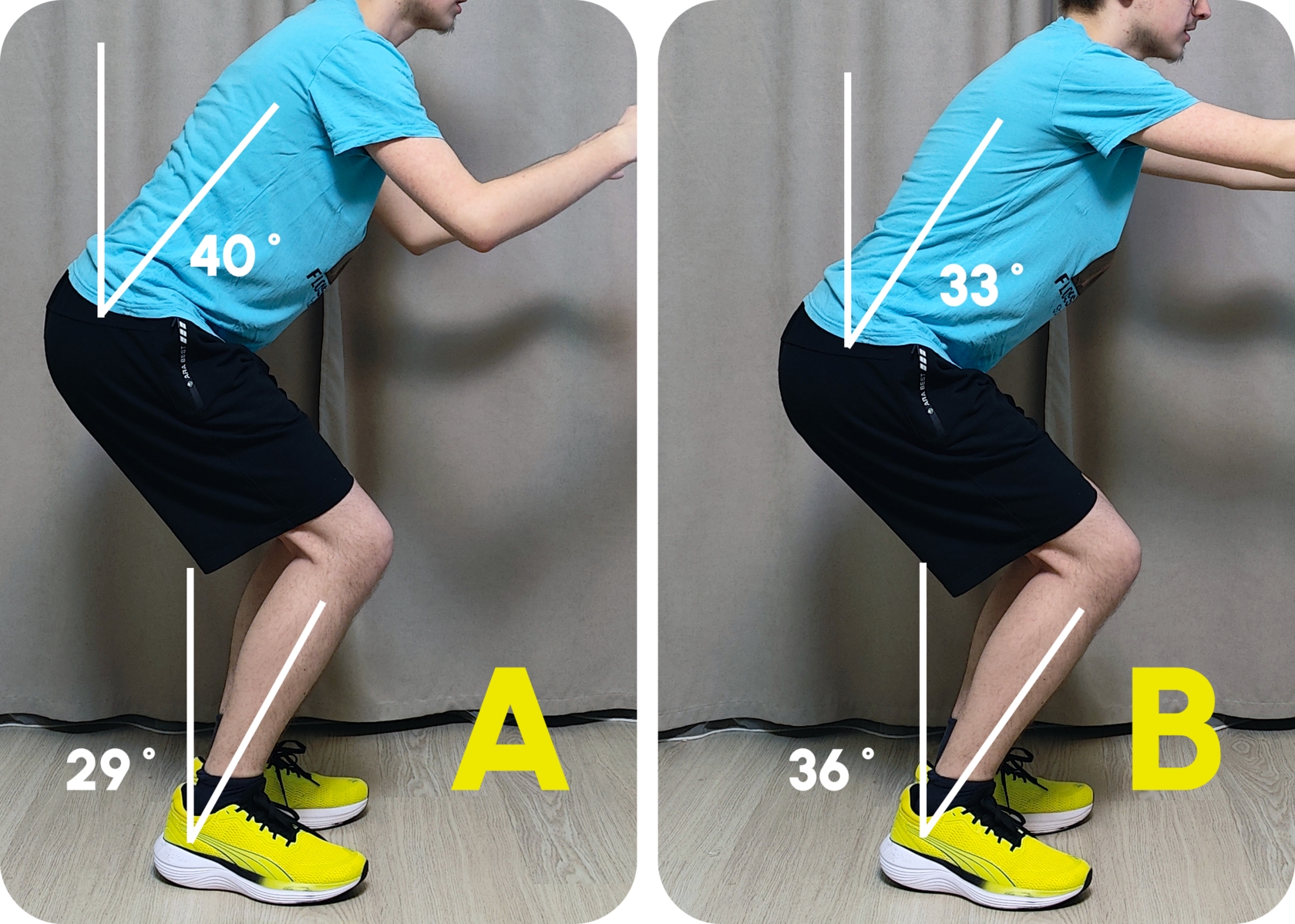
This is exactly what AiKYNETIX can measure.
From AI to Action: AiKYNETIX in Rehab and Performance
The AiKYNETIX Web Platform uses computer vision and AI to measure biomechanics during overhead squats using a simple smartphone video. It generates objective reports with real‑time recommendations—for everyone from rehab patients to elite athletes.
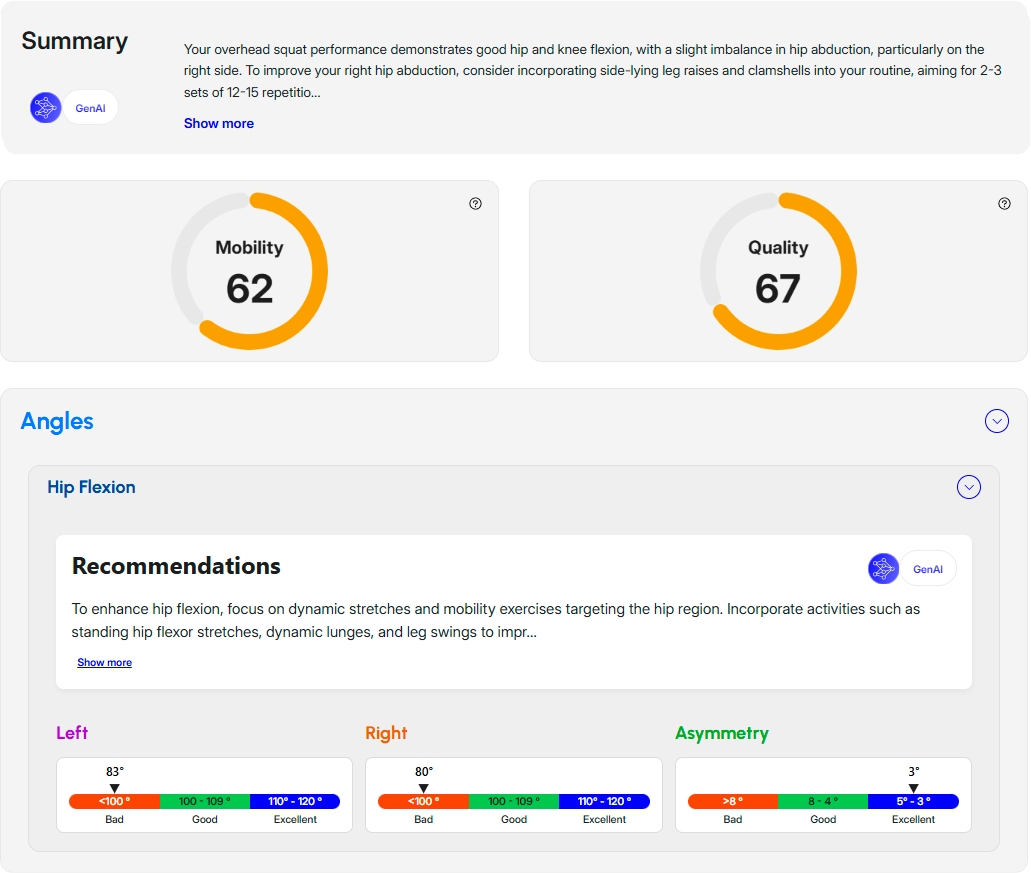
What You Can Learn from a Single Test
Mobility: 62 | Quality: 67
Good hip and knee flexion mechanics
Right hip abduction imbalance (16° vs 9° on the left)
Excellent ankle dorsiflexion (16°–18°)
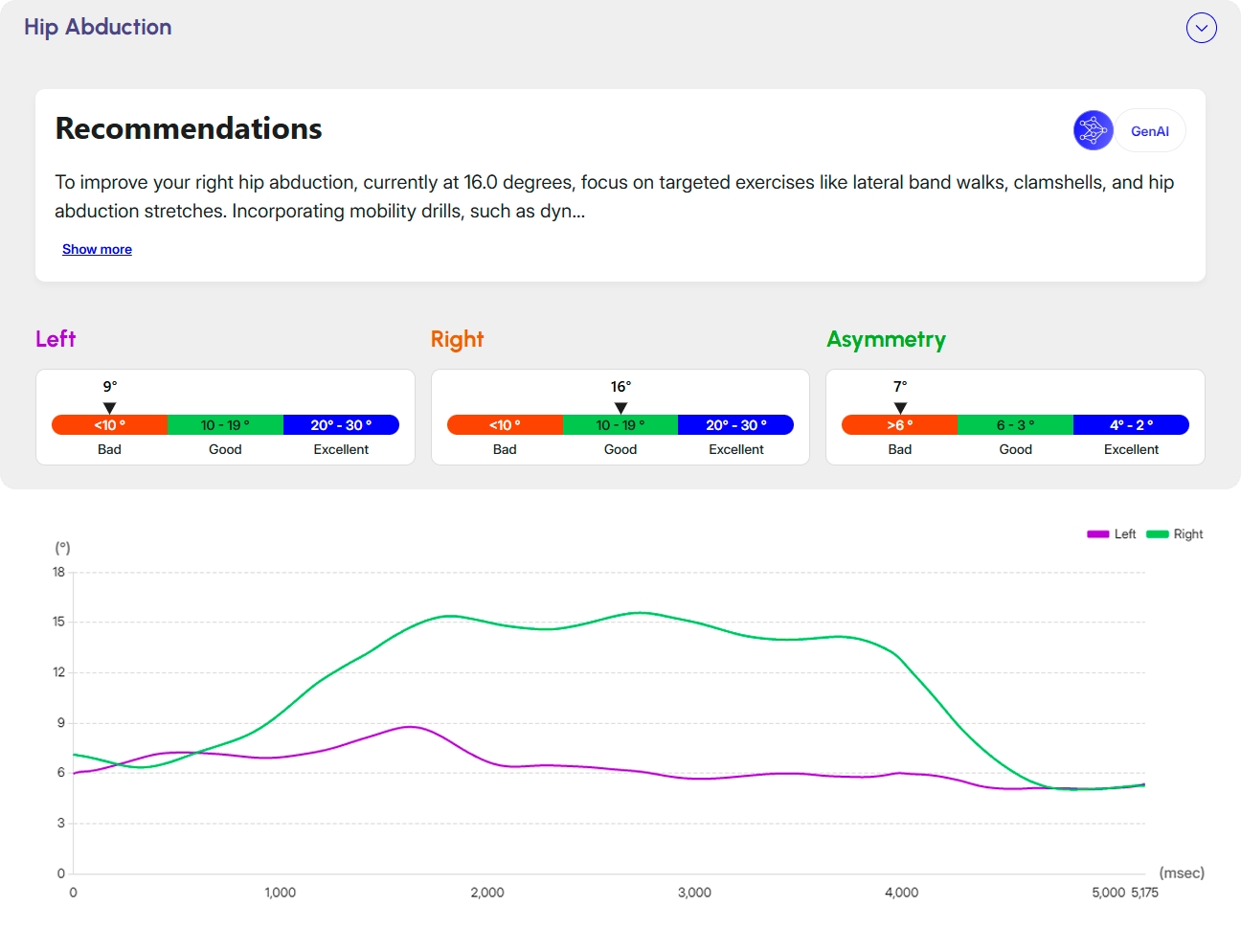
Action Plan
Correct imbalance with side‑lying leg raises & clamshells (3 sets × 12–15 reps)
Add dynamic stretches (hip flexors, glutes, circles)
Retest weekly to monitor progress
Deep Dive: Flexion Angles
Hip Flexion: 80–83° (should be > 110°)
Knee Flexion: 82–84° (goal: > 130°)
Ankle Dorsiflexion: Excellent!

Takeaway: Use this data to personalize training or rehab. Too much depth without mobility? Fix it. Knee‑heavy mechanics? Shift your torso—all based on real numbers.
Clinicians & Coaches: This Changes Everything
Whether you're a physiotherapist, sports coach, or military screening officer, AiKYNETIX turns subjective guesswork into data‑driven coaching.
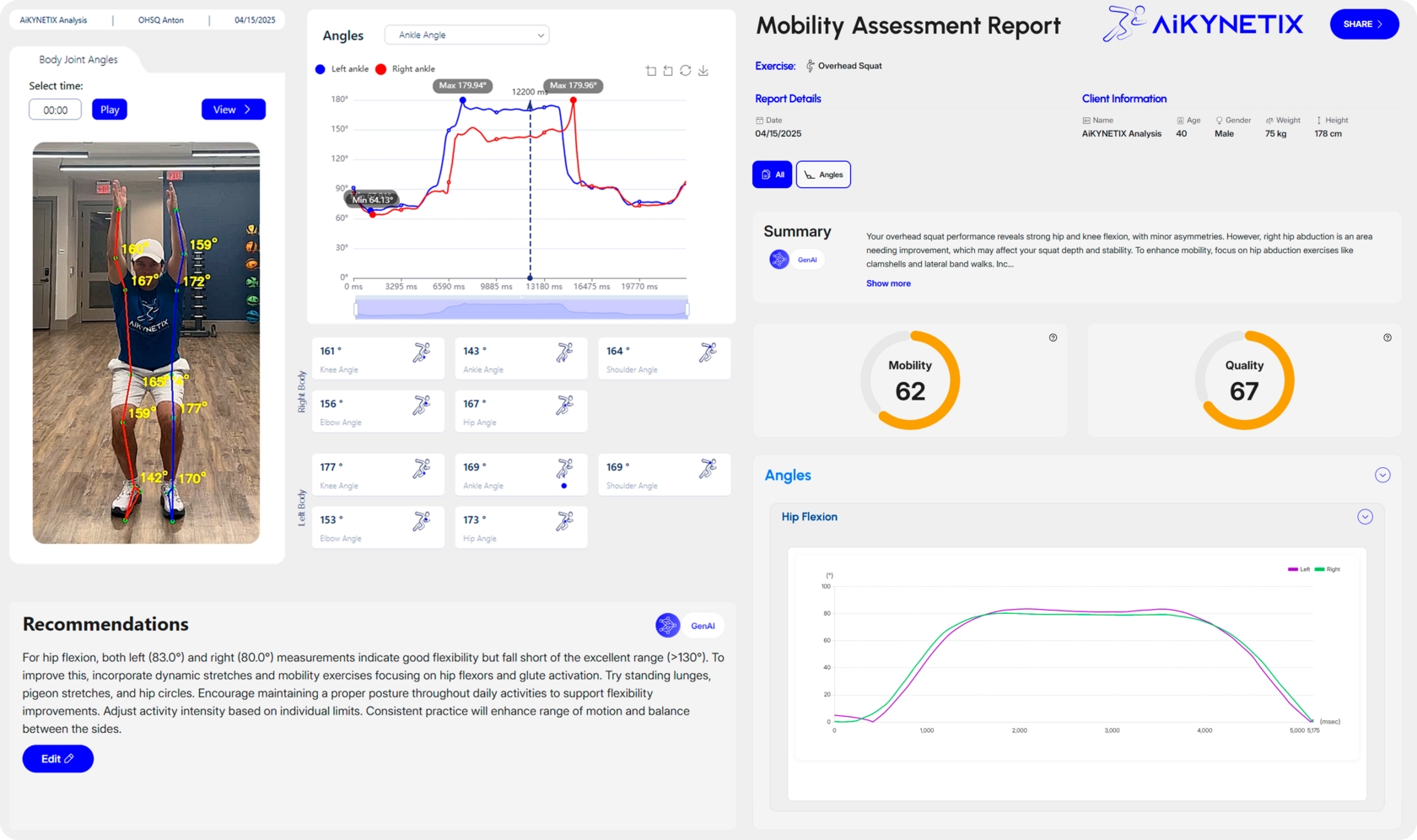
Why It Matters
Using squats without measurement is like driving blind. With AiKYNETIX, anyone can:
✔️ Track injury recovery
✔️ Prevent overuse and compensation
✔️ Quantify readiness for performance
✔️ Tailor rehab like a pro
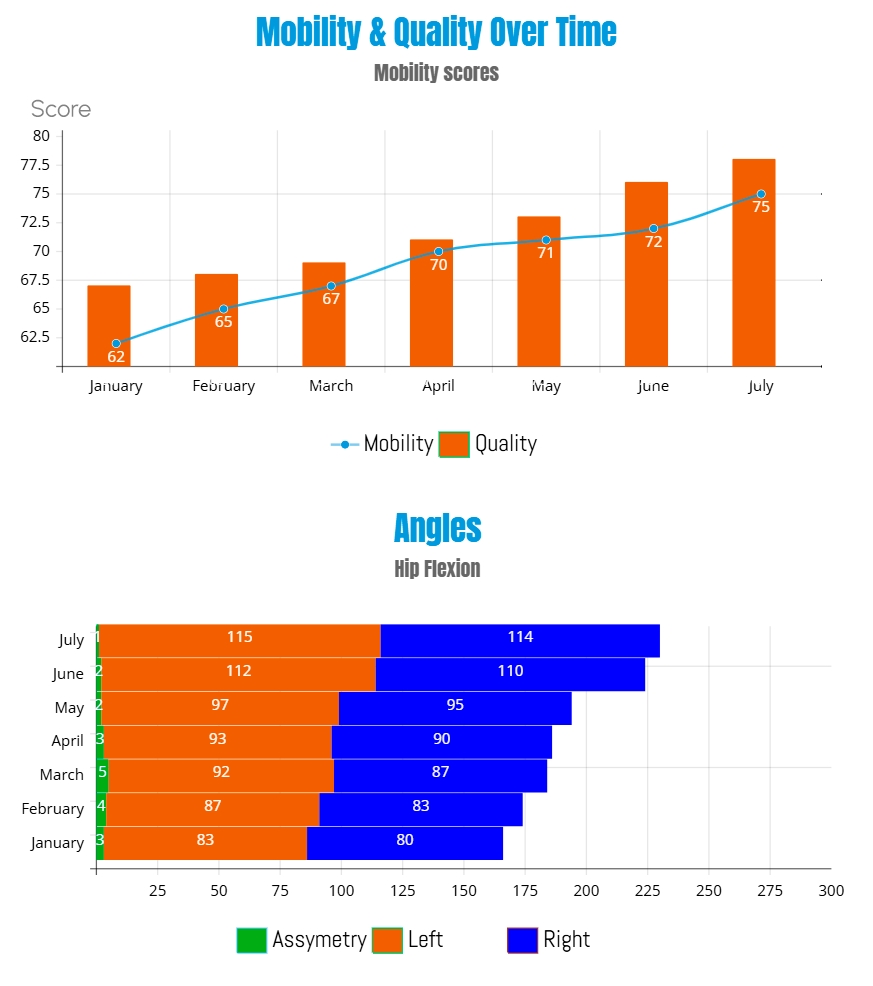
Bottom Line: Smart Squatting for a Healthier Future
The squat is powerful—but only when done right. Whether you're recovering from injury, training for competition, or just working on better movement, squats deserve attention, precision, and measurement.
With tools like AiKYNETIX, we can finally take the guesswork out of performance and put science in your corner.
Don’t just squat. Squat smart. Measure better. Move your best.
Further Resources
AiKYNETIX Web Platform – advanced features ideal for professionals
Last updated
Was this helpful?